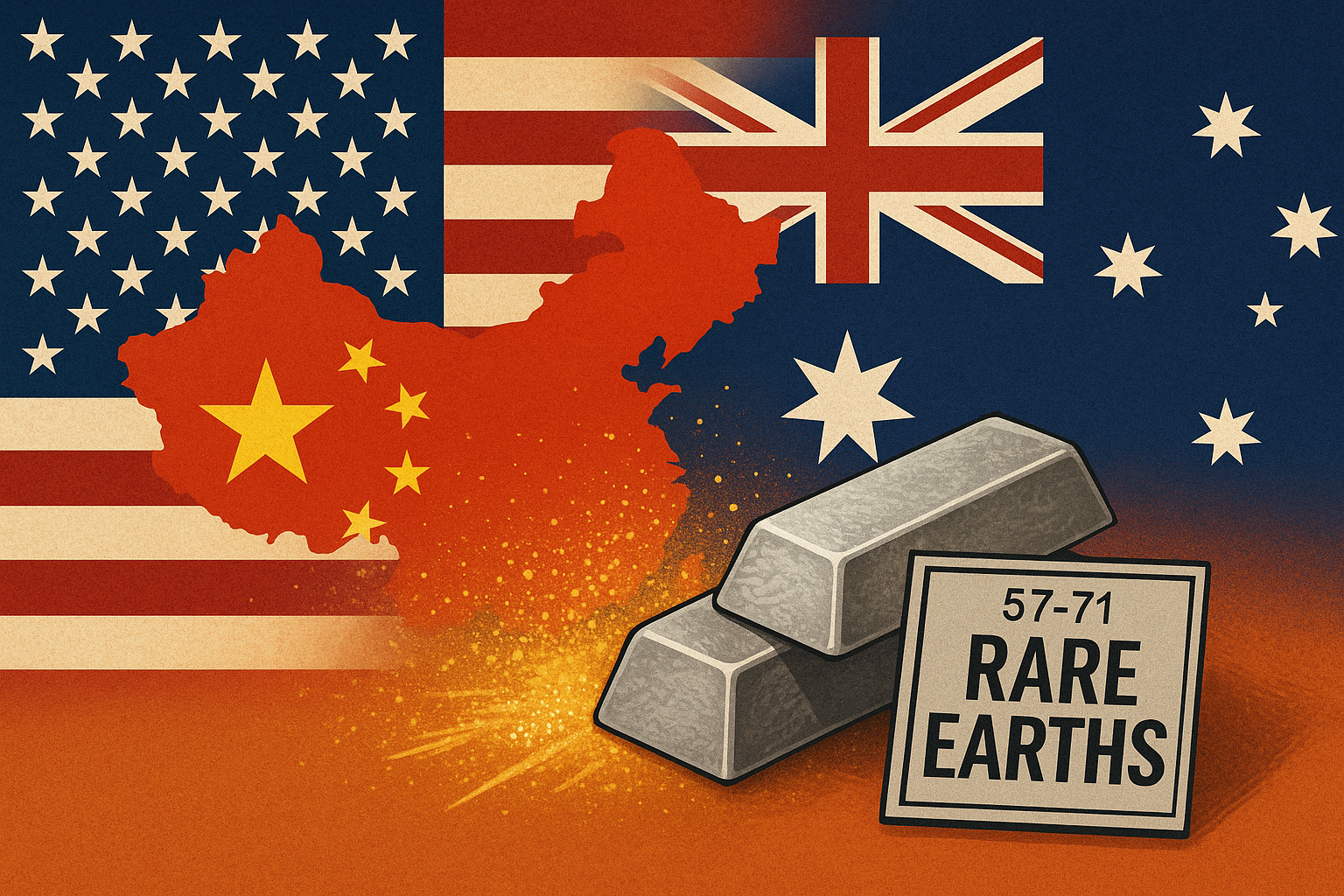In a decisive shift in the industrial and geopolitical landscape, the United States and Australia on October 20 signed the “United States-Australia Framework for Securing of Supply in the Mining and Processing of Critical Minerals and Rare Earths,” a pact designed to rein in China’s dominance of the rare earth and critical-minerals supply chain.
At the signing, U.S. President Donald J. Trump openly proclaimed: “In about a year from now, we’ll have so much critical mineral and rare earth that you won’t know what to do with them.” Australian Prime Minister Anthony Albanese underscored the broader significance that the agreement “takes our relationship with the United States to the next level.”
Yet beneath the purported fanfare lies a complex architecture of policy tools, investments and strategic guardrails: financing for mining and processing both in the U.S. and Australia, reform of permitting processes, adoption of price-floors for minerals and mechanisms to review asset sales on national-security grounds.
Industry voices bring a dose of realism. One director at the Critical Minerals Institute (CMI), Chris Gibbs, explains: “it specifically references projects in both Australia and the U.S. This is about the two countries working together on multiple fronts. It’s not just financing and permitting — they’re also looking at price floors and safeguards to counter China’s influence, which could reshape project economics and secure supply chains. It’s also interesting that it refers to working with third parties to review or deter asset sales on national‐security grounds, and extending this cooperation to assets outside their borders — it’ll be interesting to see how this plays out.”
Adding yet another layer of insight, Melissa “Mel” Sanderson, Co-Chair of the Critical Minerals Institute (CMI), views the framework as a natural extension of what she has long advocated: a structured, bilateral approach to securing and financing mineral supply chains rather than relying on policy statements or ad hoc funding. “I think there are two really interesting aspects to this deal,” she said. “The first is how the investment flow is going to work. Is it going to be the U.S. investing in Australian properties, or will it also be available for Australian companies already investing in the U.S.? One would hope that it’s comprehensive and covers both. The second point is what China’s reaction will be, because Australia has a very high exposure to China—economically and geographically. When we’re looking at secure supply chains, China could easily find ways to disrupt them if the U.S. is trying to bring critical materials all the way from Australia.”
What emerges from this framework is a modern form of industrial alliance—part investment strategy, part security doctrine. By mobilizing both public and private capital, the U.S. and Australia are attempting to redefine “supply security” as a question of who controls downstream value creation, not just who extracts the ore. In Washington, this agreement is being read less as a mining compact and more as an exercise in “manufacturing readiness”—an effort to ensure that energy transition and defense industries are never again held hostage to a single foreign processor.
The timing is strategic. With Beijing tightening export licenses for graphite, gallium, and rare earth magnet materials, the United States and its allies are racing to establish redundant supply chains. The framework commits each nation to deploy at least US$1 billion in financing within six months—targeted toward projects capable of producing end products for the domestic and allied markets.
Still, execution risk looms large. The agreement itself explicitly states that it “does not constitute or create any legally binding or enforceable obligations,” a caveat reminding markets that policy intent does not automatically translate into production. Building separation and refining capacity takes time—often measured in permitting cycles and capex approvals, not press releases.
Jack Lifton, Co-Chair of the Critical Minerals Institute (CMI), distilled the commercial logic with characteristic candor: “The Australian position is that if the United States wants supplies from Australia, it has to chip in on the cost. If a company in Australia is to be brought into production and those products are targeted to the U.S. market, then the U.S. must show its good faith by investing in those projects. And upon that happening, the Australian government will also invest.”
Lifton points to Iluka Resources Ltd. (ASX: ILU) as an early beneficiary—its heavy mineral sands and rare earth operations already backed by a A$1.3 billion grant from Canberra—as well as the Donald Project in Victoria, operated by Energy Fuels Inc. (NYSE American: UUUU | TSX: EFR). That project, he notes, contains “some of the highest-grade monazite and xenotime I’ve ever seen,” with material slated for processing at Energy Fuels’ White Mesa mill in Utah. He also highlights Arafura Rare Earths Ltd. (ASX: ARU) and Hastings Technology Metals Ltd. (ASX: HAS) as likely contenders, contingent on U.S. co-financing.
Investors should therefore view this agreement not as an open invitation for speculative juniors but as a selective channel for “shovel-ready” assets. Governments appear focused on de-risked, near-production projects capable of immediate offtake. Lifton concludes that “the winners are probably already chosen.”
Taken together, these remarks describe a framework that blends policy ambition with commercial realism. It represents a deliberate tilt toward bilateral industrial policy — a recognition that capital, regulation, and geopolitics are now inseparable in the critical minerals equation.
The U.S.–Australia deal is thus less about rhetoric and more about architecture. It constructs a financial and strategic scaffolding around the next generation of rare earth and battery material supply chains. For investors attuned to the fact that minerals have become instruments of statecraft, this agreement signals the beginning of a new competitive era—one defined as much by who finances and processes these materials as by who extracts them.




Leave a Reply